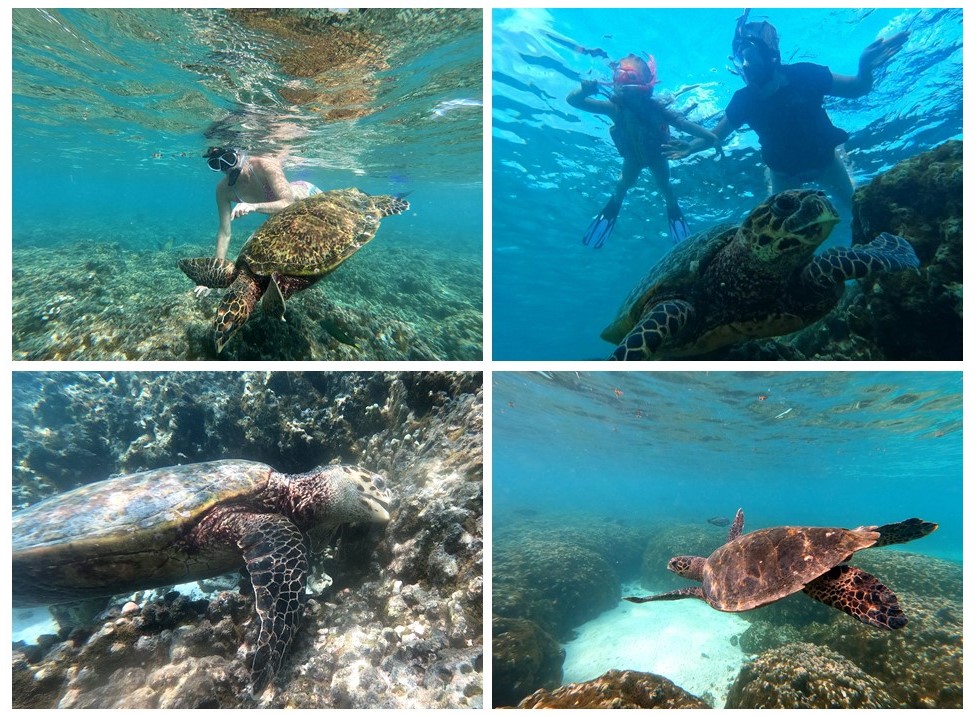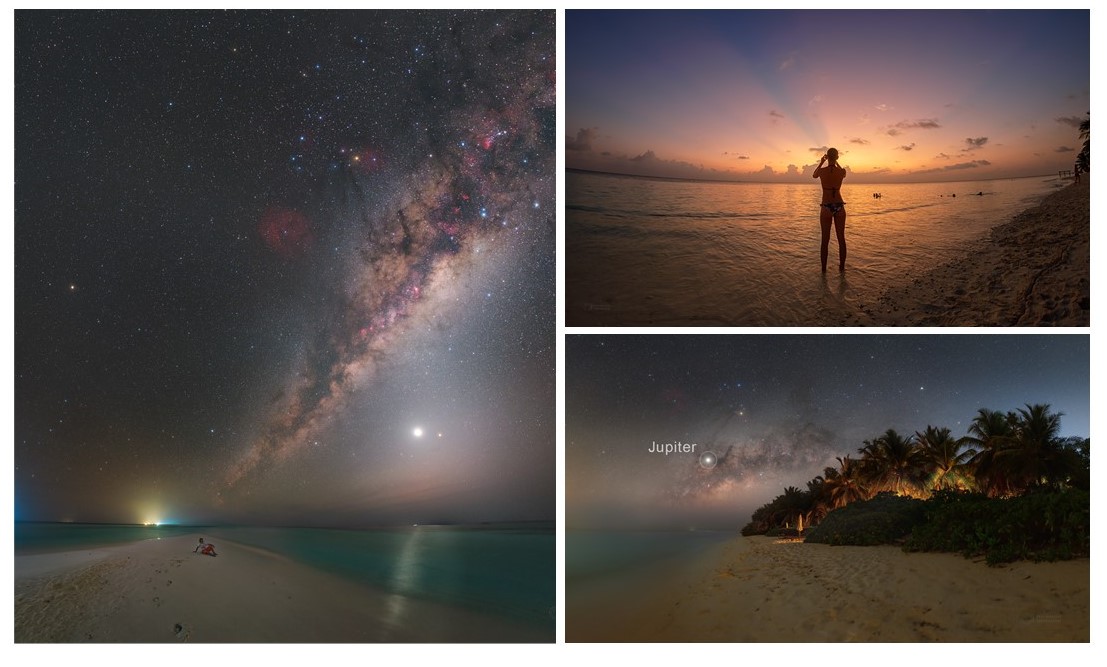Five of seven types of sea turtles in the world live in the Maldives, but primarily two species are most abundant in the ocean waters around Thoddoo. They can be surprisingly easily spotted while snorkeling or diving around, especially close by an island of their natural rich reef food environment. The two types are:
- The Green Sea Turtle (Chelonia mydas in Latin, kareta obrovská in Czech language, зеленая морская черепаха in Russian language) is a species of large sea turtle of the family Cheloniidae. It is the only species in the genus Chelonia. Its range extends throughout tropical and subtropical seas around the world, with two distinct populations in the Atlantic and Pacific Oceans, but it is also found in the Indian Ocean. The common name refers to the usually green fat found beneath its carapace, not to the color of its carapace, which is olive to black. The green sea turtle is listed as endangered by the IUCN and CITES and is protected from exploitation in most country.
- The Hawksbill Turtle (Eretmochelys imbricata in Latin, Kareta pravá in Czech language, xоксбилл черепаха in Russian language) is CRITICALLY endangered sea turtle belonging to the family Cheloniidae. It is the only extant species in the genus Eretmochelys. The hawksbill turtle is easily distinguished from other sea turtles by its sharp, curving beak with prominent tomium, and the saw-like appearance of its shell margins. The World Conservation Union, primarily because of human fishing practices, classifies imbricata as critically endangered.
Swimming with (by) the turtles is just magical. At Thoddoo, we have one rich and large area for snorkeling with turtles on southwest part of the island, reachable just from the main Sunset Beach. The turtles, despite the great bustle of tourists, fearlessly inhabit the food-rich reef and allow themselves to be seen not far below the ocean surface. Sometimes you can see them from a kayak or other quiet floating device (paddleboard, mattress, inflatable boat) directly on the surface, momentarily raising their head in the air to take a breath. After each breath, they can stay under the surface for tens of minutes so that they can focus on finding food again.
But the turtles-gazing also requires something from us to the turtles in return: The maximum space and consideration. And not only to the turtles themselves, but of course also to their habitat, i.e., to the coral reef. In the video, there is a moment when the girl is touching the turtle, but you better resist this temptation, because any touch or even too much presence can greatly stress the turtles. Also, give them space, allow them to decide how close an encounter they want, try not to restrict their movement. When you see a high tide brings some dangerous object turtles can be caught in (e.g. nets), remove them from the water immediately. So also, the regular trash (plastics, but anything else), because this can negatively influent the local ecosystem including the coral reef, the source of food for the turtles.
When snorkeling, try to follow these easy five rules to keep the turtles not stressed and enjoy their presence:
- If possible, do not touch turtles (definitely not on a head)
- Try to be as quiet as possible with minimal splashing and talking, it can scare them away!
- Try not to swim directly above the turtle, turtles need space for next breath on a surface
- Never chase them, they can get stressed of losing their freedom
- If tide and stream allow approach from the side only and keep a respectful distance away
More instruction you can find in this Guide of IUCN.
Very important is to be careful during the turtles’ nesting period (usually in July and August), when a turtle puts many eggs in deep hole on a beach and small newborn turtles then look for their way back to the ocean. Unfortunately, it’s more and more difficult for them to find their way to the sea due to the increasing light pollution. The confused turtles head inwards on the island rather than to the ocean which is lit by the reflection of the moon that is meant to guide them. If you see that case, you can try to assist baby turtles in their struggle for survival by helping them go in the right direction. But, if possible, without touching, only with building a barricade in front of their wring way to lead them the right one. Turtles normally hatch during the full moon, but some of the hatchlings do happens on darker nights.
The light pollution, which confuses small turtles in their way to the sea, is caused by irresponsible using of strong artificial light, i.e., halogen lamps, glowing ships and illuminated resorts, ports, or cities. Unfortunately, not all Maldivian islands are doing so well, on many of them they use light where it is not needed (lights shine with great intensity up into the sky, bright ball lights are often used instead of directional lights that would only shine down to the ground). If the Maldivian government and the owners of the accommodation centers would come up with a plan to effectively reduce light pollution by installing the right and nature-friendly lamps (which is very well described by International Dark Sky Association), it would significantly help to the local ecosystem and protect the endangered sea turtles!
For more information, please don’t hesitate to contact us. We will happily answer all your questions (not only about the unique marine life at Thoddoo). You can contact us via email info@amazingviewthoddoo.com or WhatsApp number +9609153344 (Moosa Farooq)





